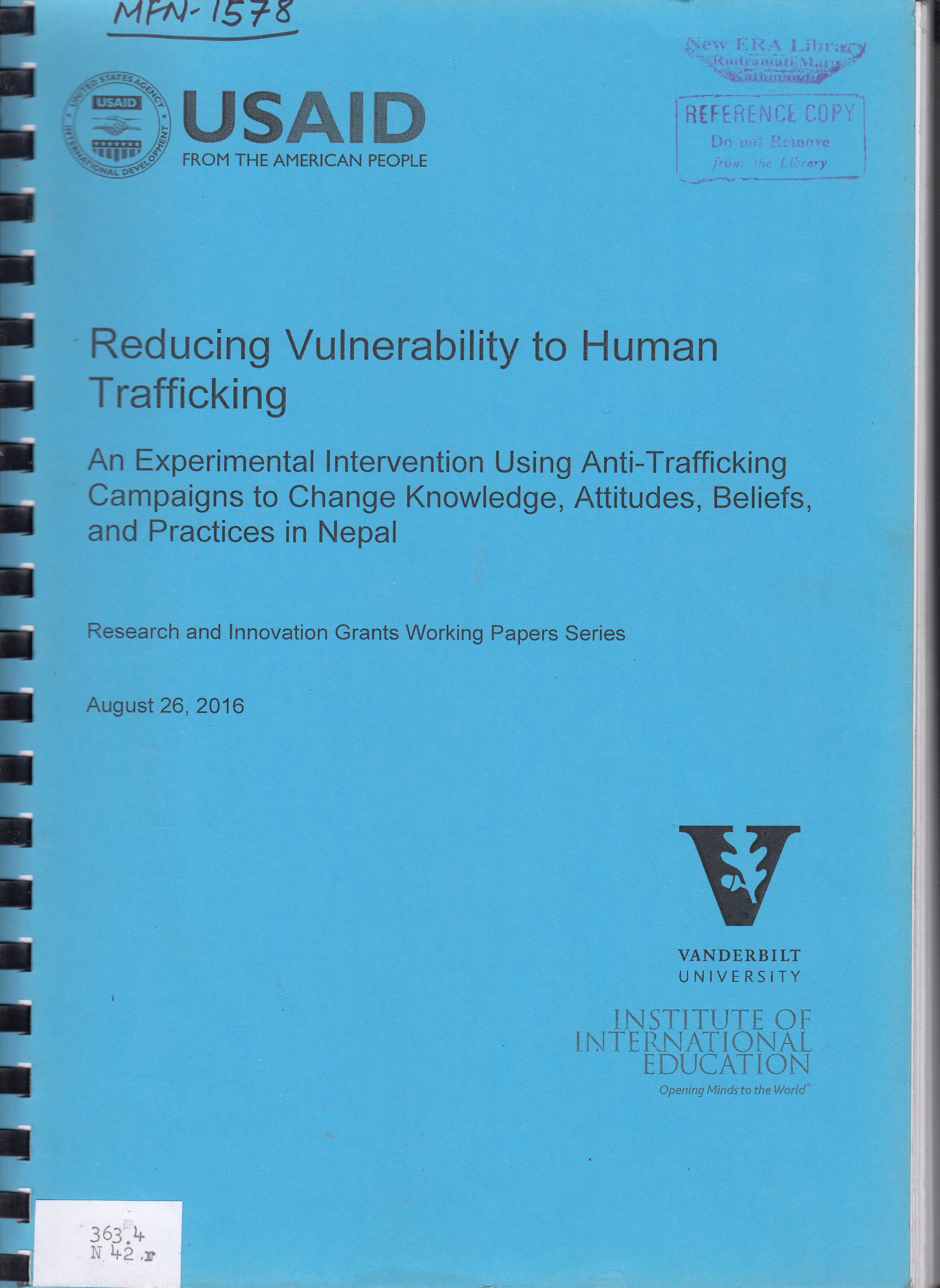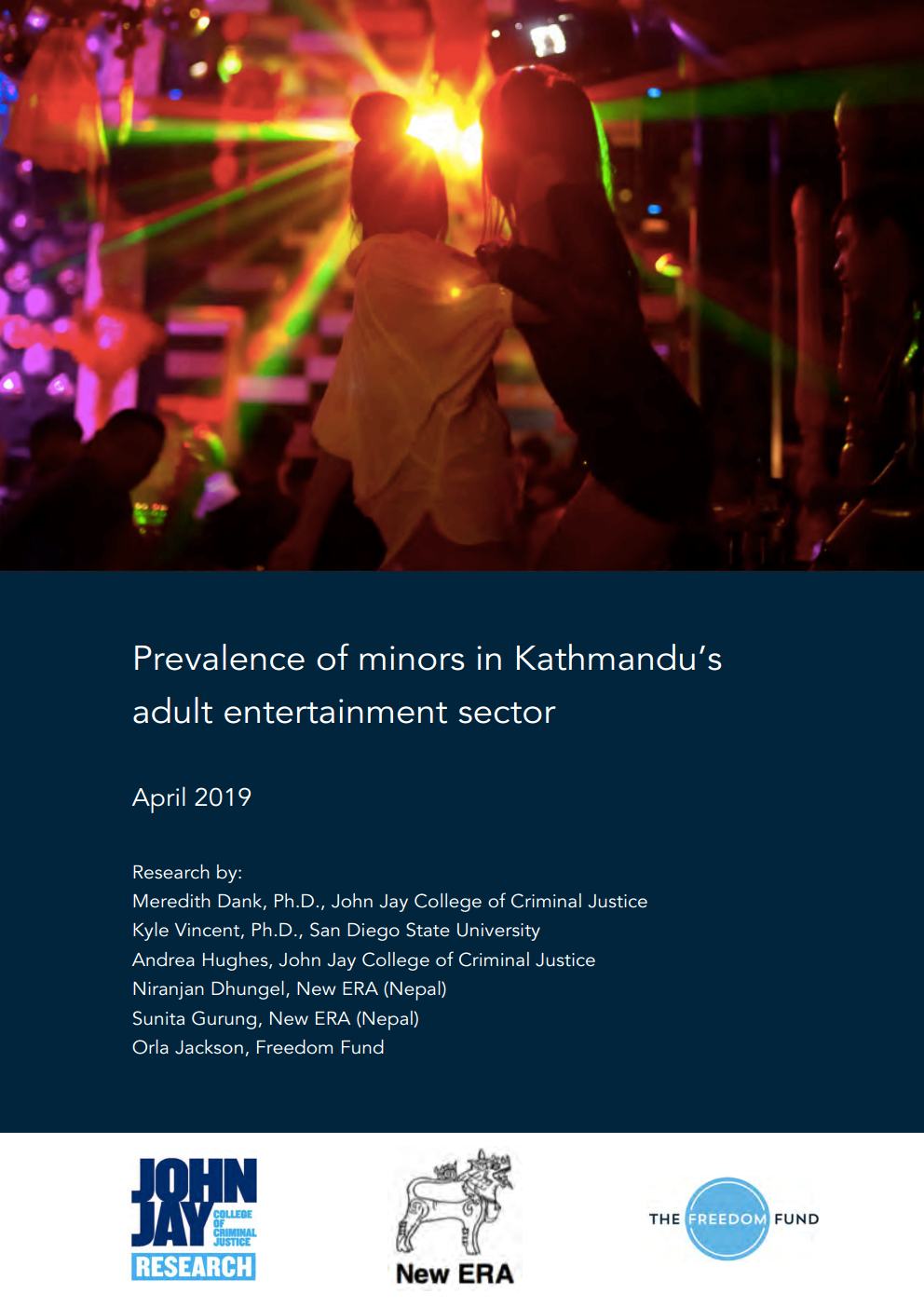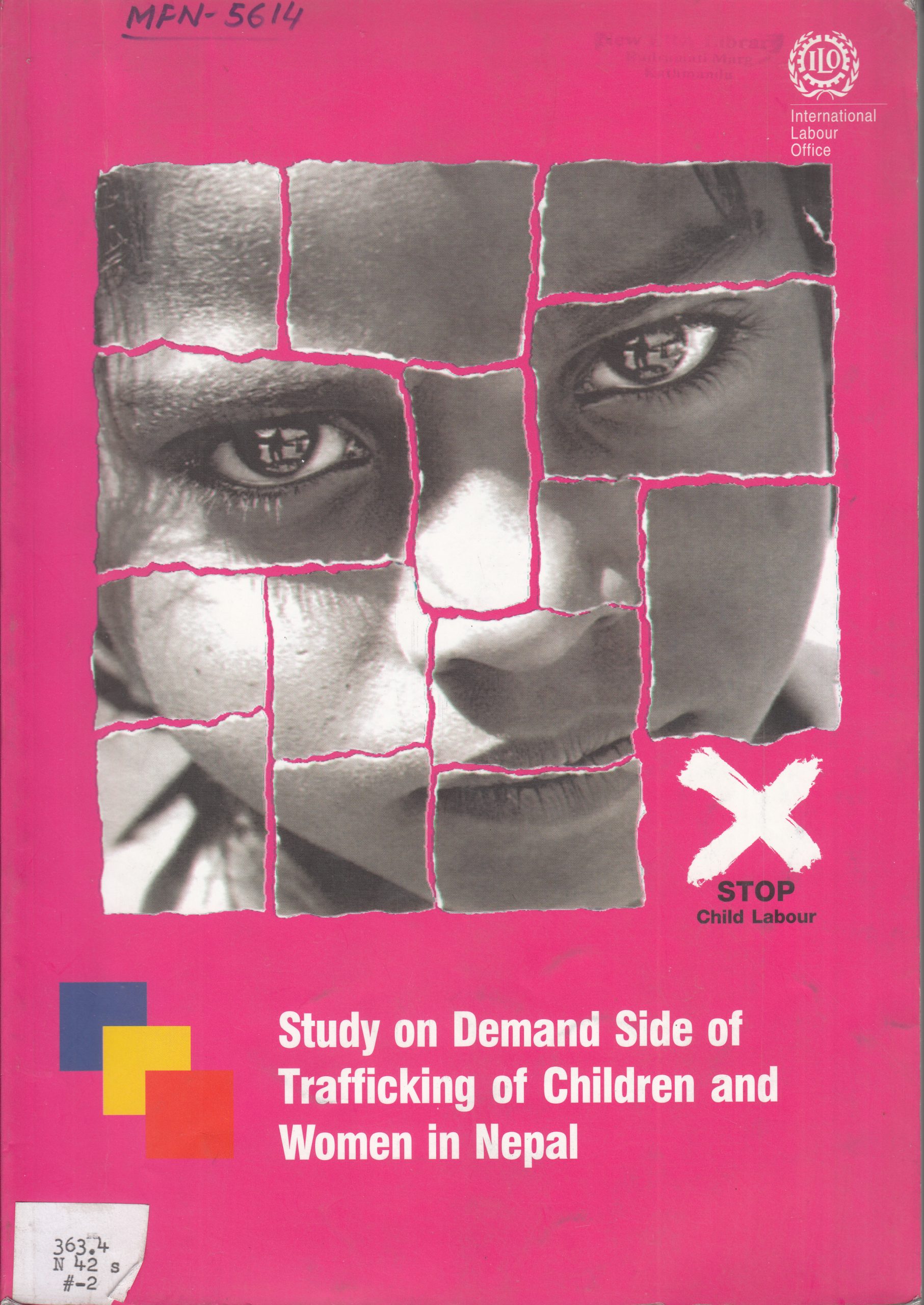This study aims to deploy various information campaigns to address the lack of concrete data regarding the effectiveness of anti-trafficking media campaigns, and to do so with a rigorous “gold standard” research design that establishes the causal affects of anti-trafficking awareness efforts. The study was conducted in two phases: baseline and mid-line surveys. During the baseline survey, participants were exposed to various sources of media such as poster, graphic novels, videos and audios that carried different anti-trafficking awareness messages. Pre and post interviews conducted before and after exposure to these media sources, helped identify the level of effectiveness of different sensitization programs against human trafficking. Likewise, end line survey on the same participants after few months was expected to give a sense on the effectiveness of such anti-trafficking messages over an extended period of time.
Report Type: Human Trafficking
Prevalence of Minors in Kathmandu’s Adult Entertainment Sector
The objective of this study was to pilot and demonstrate a rigorous and practical method for measuring prevalence of exploitation of minors in the context to provide information about the nature and intensity of exploitation in different types of work-sites, and the types of tactics used to keep people in their situation; to identify ways in which the nature of commercial sexual exploitation and sex trafficking.
Human Trafficking Vulnerability Survey – An Experimental Intervention Using Mass Media to Change Norms and Behaviors in Nepal
This third round survey was conducted to explore the impact of different message formats and types on behavioral changes that respondents can make to reduce the risk of human trafficking and support anti trafficking efforts in their communities. The study also assessed the effectiveness of different anti-trafficking formats and message on respondents’ attitudes and beliefs towards human trafficking.
Study on Demand Side of Trafficking of Children and Women in Nepal
Human trafficking is a criminal, clandestine and collaborative act. It is a commercial, multidimensional phenomenon with indivisibility of supply and demand. Realizing the gaps in understanding the ‘demand side’ of trafficking of children and women in the Asia region, this study was conducted in five South-East Asian countries namely, Nepal, Bangladesh, Pakistan, Sri-Lanka and Indonesia. This regional study provides an in-depth understanding of the ‘demand for’ and the ‘demand side’ of trafficking in women and children. More specifically the study examines the dynamics and the enabling environment with reference to the demand for trafficked labor and the demand side of trafficking, in particular that of girls, boys and women.http://un.info.np/Net/NeoDocs/View/4990
A Situation Analysis of Sex Work and Trafficking in Nepal with Reference to Children
This study was to investigate the “root causes” of entry of children into sex work and the trafficking phenomenon associated with them. The study was conducted in three phases: (a) nation-wide survey of sex work and trafficking impact; (b) in-depth interviews with child and adult sex workers in Nepal and in India; and (c) investigation of community, family and non-family situations prior to the child becoming sex workers or women or girls falling victims to organized trafficking. The study identified the key elements in the prior family, social and community situations of commercial sex workers which are the causes of children entering sex work. It examines family, social and community situations which places children at risk of entering sex work. It further identifies the key elements in the prior family, social and community situations of trafficked girls and women which contribute to their being trafficked or entering sex work in India.






